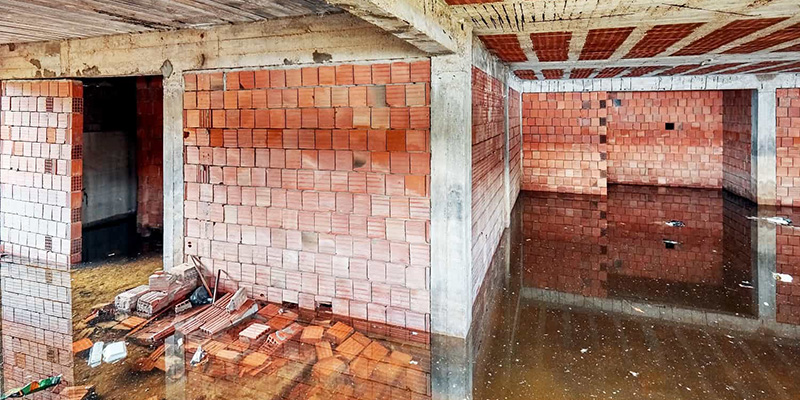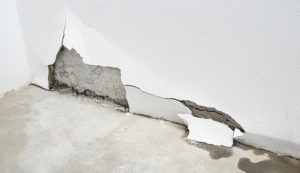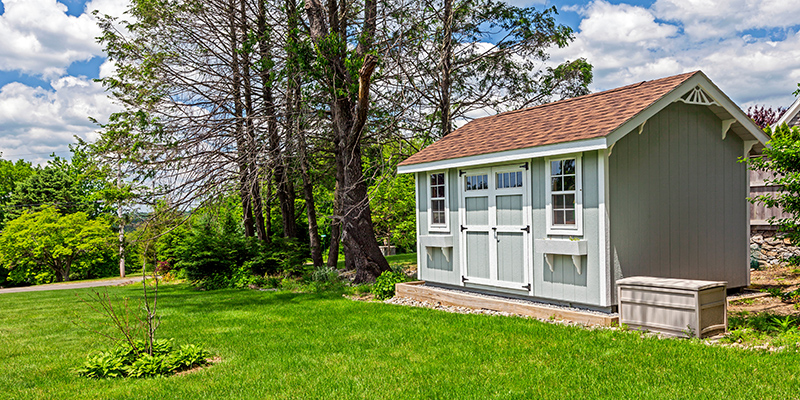Water Damage Behind Brick Walls: How Do You Deal With It?

Brick walls are a lovely addition to any community. Although brick improves the overall aesthetic of your HOA, underlying water damage behind brick walls is not uncommon. Here are ways to deal with water infiltration in your brick surface.
Browse By Category
Sign up for Our Newsletter
Brick walls are a lovely addition to any community. Although brick improves the overall aesthetic of your HOA, underlying water damage behind brick walls is not uncommon. Here are ways to deal with water infiltration in your brick surface.
What Causes Water Damage Behind Brick Walls?
Many different construction projects utilize bricks due to their long lifespan and stylish design. To successfully construct a building using brick, contractors must have enough experience to avoid common pitfalls. If there is faulty construction on brick buildings, there can be very costly damages in the future.
Can water leak through walls? Short answer, yes. Faulty construction leads to water damage, and many HOAs have experienced such cases. If there are structures in your HOA that you suspect are suffering from severe damages related to water infiltration through brick from potential negligent construction, it is wise to review the information below.
What Is the Lifespan of Construction Using Bricks?
Brick usually lasts the full duration of a building’s lifespan. This is why many find it an appealing material for construction.
Depending on the construction date, buildings can last hundreds of years. Of course, this is assuming no major fires or natural disasters occur.
Improper construction, though, can lead to water damage. This is often due to the lack of drainage systems. For this reason, it is important to carefully and regularly survey brick structures. During an inspection, check for common signs of water damage behind brick walls.
Why Brick Buildings Need a Secondary Drainage System
Leaky walls in brick buildings are not unusual. To avoid leaks, brick buildings must have a secondary drainage system. This makes sure the wall cavity does not take in water. As a result, you can avoid damaging the framing or sheathing.
When a structure has a secondary drainage system, installed sill flashings and kick-out flashing can also have a weather-resistant barrier. Flashings ensure water is safely evacuated outside of the walls. So when water does penetrate through the brick and around fenestrations, it will simply roll down the barrier and make its way to the flashings. Failure to follow these precautions can cause substantial damage to a brick structure.
How to Tell Whether There Is Damage to Bricks in Your Community
 It is easy to miss signs of water infiltration. If you look closely, you will see white, salt-looking deposits on the face of the brick. This is known as efflorescence.
It is easy to miss signs of water infiltration. If you look closely, you will see white, salt-looking deposits on the face of the brick. This is known as efflorescence.
Typically, incorrect construction gives rise to efflorescence. As a result, water becomes trapped inside the wall cavity.
Once efflorescence begins to get more severe, the wall gets saturated with water. The drainage plane is missing or clogged, and the water ends up having nowhere to go but through the face of the bricks.
HOAs must understand the severity of efflorescence. Once it becomes visible, it means substantial and costly damage has already taken place. Assessment and repairs must soon follow.
The Reason Many Contractors Make Mistakes with Brick Construction Projects
It is not uncommon for contractors to be sloppy and not install bricks properly. One of the most common errors that contractors make is not removing the extra mortar from the back of bricks during the construction process. If the contractor does not remove the extra mortar from the bricks, the mortar will then dry and set.
When this happens, the solidified mortar will block out water clearing down the weather-resistant barrier. As a result, water cannot evacuate properly. As more water gathers, the weather-resistant barrier erodes and water enters under it. Substantial damage then occurs without an outside observer even noticing.
How to Deal With Brick Water Infiltration Damage
If your HOA suspects water damage behind brick walls, the HOA should consider hiring an architect or forensic engineer who can testify in court. After deciding to have an expert investigate the surface, it is important to have moisture probes completed to see how far the water has entered and potentially destroyed the framing and sheathing.
If there are heightened moisture levels found in walls, you must have test cuts done to uncover the framing and sheathing. This way, you can assess and determine whether your insurance can cover the damages. Once this information is complete, it is wise for the HOA to assess what damages could realistically be collected in a lawsuit against the negligent parties.
How to Determine Negligent Parties That May Be Culpable
 When considering which parties are responsible for brick wall leaks, it is best to consider who was involved with the overall construction process of the building. For example, the mason who placed the brick may have been lazy.
When considering which parties are responsible for brick wall leaks, it is best to consider who was involved with the overall construction process of the building. For example, the mason who placed the brick may have been lazy.
The architect who drew up the plans for the building could have not done their due diligence to recommend appropriate design procedures. The contractor could have failed to install flashings properly.
If a technician who installed the doors and windows did not install them properly and water infiltration occurred as a result, they could be found liable. The roofer may have not installed kick-out flashings correctly. The general contractor could have cut corners to save on the project’s budget.
Independent or third-party inspectors could have overlooked key inspection details. A manufacturer of the brick could have had improper assemblies that gave rise to structural damages.
In any construction project, there are many parties involved. An HOA that is looking to recover damages will have to realistically assess which parties were actually involved and whether they can realistically recover damages.
If the HOA considers these variables and realizes that it is worthwhile to proceed with a lawsuit, it is highly recommended to work with an experienced attorney to have the best possible outcome of their case.
The Benefits of Working with an Experienced Attorney
When trying to resolve the water ingress case for your HOA quickly, there are times when investing in outside counsel is essential to have a successful outcome of your case. When managing severe structure damages from water infiltration through brick, there is potential to recover a great deal of capital if the HOA is working with an established attorney with experience in handling related cases.
In addition, the attorney will be able to recommend an expert witness to assist in gathering evidence about the nature of the damage and which potential parties in the construction process could be found liable. It is best for your HOA to interview many prospective attorneys to ensure that you find the best-qualified attorney to proceed with your case.
Take Care of Your Brick Surfaces
Water damage behind brick walls is one of the most common masonry issues HOAs face. While brick surfaces add an industrial charm to your community, they can also give rise to water leaks when done improperly. If you find yourself in the same situation, determine who is responsible, and take appropriate action.
RELATED ARTICLES:
Trending Now
Related Article
Sign up for Our Monthly Newsletter
Sign up below for monthly updates on all HOA Resource
















